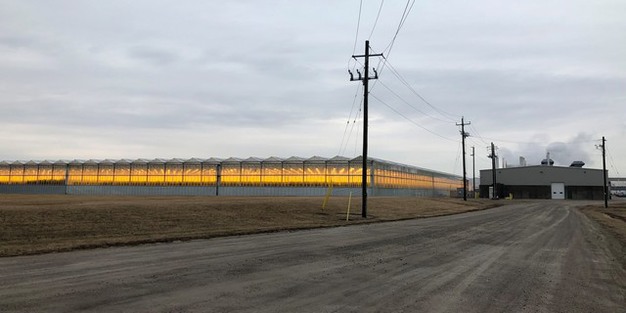In a world where health concerns and security of food supply are starting to play a more and more important role, the greenhouse sector is responding by going through an explosive growth. Increasing local food production is considered more and more important in many regions around the world. "To facilitate this rapid expansion of the greenhouse sector, standardization of design and construction are increasingly important to build projects on-time, on-budget, while immediately performing as expected," says Dick Kramp with Gruppo AB.

Building on years of greenhouse experience, Gruppo AB set out to develop a greenhouse-specific version of their containerized CHP plants. Now the result of this design effort is presented.
The system is essentially a combination of 3 modules (containerized generator set, exhaust cleaning, and heat recovery). During the manufacturing process the entire CHP plant will be fully assembled, before taking it apart and shipping it to the end destination.
Greenhouse "kits"
Once arrived on site, the complete CHP plant can be re-assembled in as little as 5 days, providing greenhouse cogeneration customers with the following connection points: a gas inlet at the container wall, electricity at generator terminals, hot water at the container wall, and CO2 at the exhaust stack
"Timing of this product development has been perfect. Global greenhouse construction has increased significantly in recent years and many sites that either require power that cannot be provided by the local utility, or sites that are looking for lowering their energy costs have started to utilize the modular, pre-engineered CHP plants," Dick explains.
System controls
In addition to these modular CHP plants, system controls were also optimized and standardized.
"Key to successful operation is integration with the greenhouse climate control computer to make sure that the CHP plant always operates with as primary focus the needs of the greenhouse," Hans van den Heuvel with Gruppo AB adds.
For greenhouses with grow lights, a grow light control computer was developed that in combination with the CHP master control system ensures engine performance is at all times matched to lighting demands as set by the greenhouse climate control computer.
Grid parallel operation
For grid parallel operation, the system will optimize the operation by automating if power should be drawn from the grid, from the CHP plant or even whether power should be exported into the grid during periods where grid power is more expensive than power produced by the CHP plant.
Options for optimizing system operation through energy storage and use of renewable natural gas can also be added to the system.
Canadian market
One market that has benefitted significantly from these developments is Canada. In recent years, more than 60 MW of high efficiency cogeneration plants installed in a wide variety of applications. "Some in locations where grid power is not available, some in response to government incentive programs and some because of lower operating cost when compared to purchasing power from the grid, while utilizing boilers for heating and CO2 fertilization", says Jan Buijk, responsible for the Canadian applications with Gruppo AB. "Some recent projects even utilize heat from the CHP plant to provide cooling (through absorption chillers) for their greenhouse operation."
"When the Ontario Government introduced an incentive program specifically targeting greenhouses to install high efficiency cogeneration plants to help address the growing power demand in the province, there were 7 greenhouses that worked closely with AB to respond to this opportunity. After determining the optimum size cogeneration plant and how to best integrate this in a new greenhouse to be built in Leamington, all these greenhouses were successful in securing a contract for power from this CHP plant to be sold into the Ontario grid and contracted with AB for the turn-key design, manufacture, and construction of more than 40 MW of new CHP capacity to be built," he adds.
"Despite significant challenges due to the Covid-19 pandemic, AB was able to complete all projects on time and on budget. Today, anytime the market price is higher than their cost of running, these greenhouse CHP plants are delivering electricity at efficiencies greater than 90% into the Ontario grid while heating the greenhouses."
To learn how CHP can support the greenhouse sector with an immediate result on energy savings, reducing the price of growing while increasing resiliency and decarbonization, register to the AB webinar that will take place on June 10th

 AB
AB